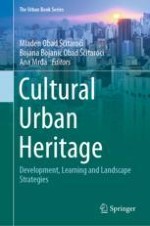2019 | OriginalPaper | Chapter
3. Applying Cultural Tourism in the Revitalisation and Enhancement of Cultural Heritage: An Integrative Approach
Authors : Daniela Angelina Jelinčić, Yoel Mansfeld
Published in: Cultural Urban Heritage
Publisher: Springer International Publishing
Activate our intelligent search to find suitable subject content or patents.
Select sections of text to find matching patents with Artificial Intelligence. powered by
Select sections of text to find additional relevant content using AI-assisted search. powered by
